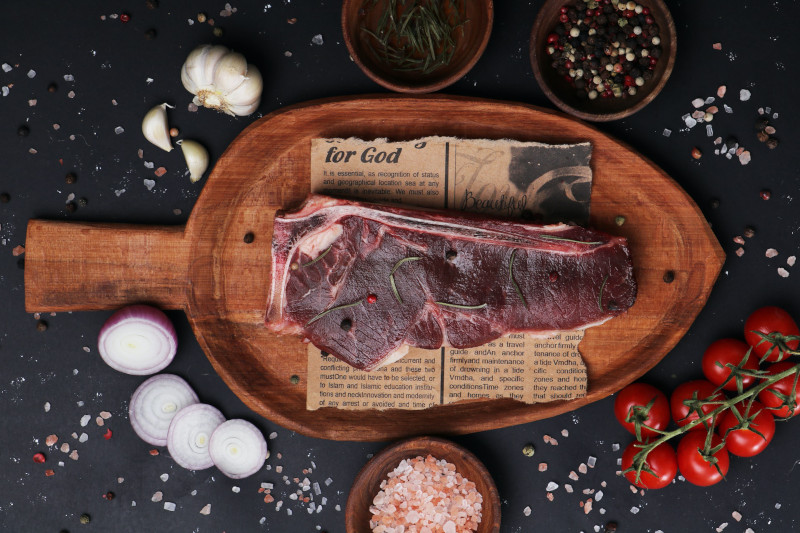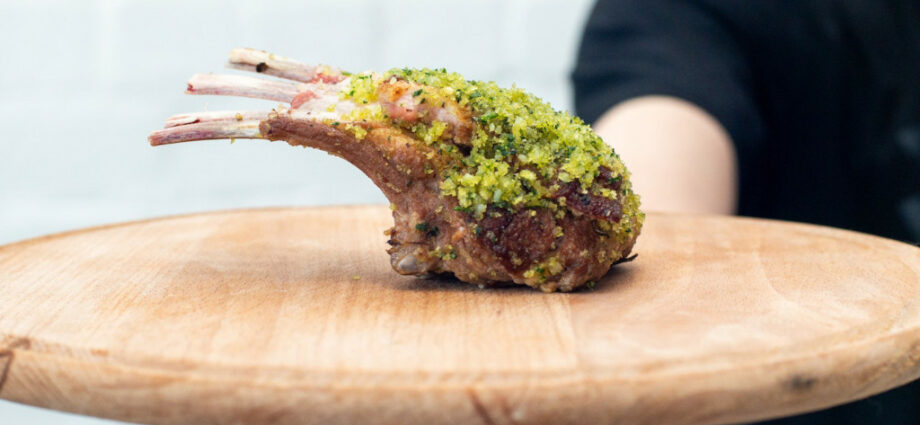The spring season is ideal for lamb, and it’s not simply because the weather is becoming warmer. Although the taste of this soft flesh may differ from one place to the next, it is universally agreeable when prepared properly. Let’s get down to the meat and potatoes of this springtime favorite and how to enjoy it with whisky before you start drooling.
What Do We Mean When We Say ‘Lamb’?
While this may appear to be a simple query, the actual answer is somewhat involved. There are a few different ways to define “lamb,” but we’ll stick with the European kind here.
A lamb is typically defined as a sheep that is younger than one year old. When their permanent incisor teeth have not yet come in (between ages 4 and 12), they are often slaughtered. Lambs that are less than four months old are typically the most sensitive. The color of the lamb can be used as a reliable indicator of its age.
A hogget is what the British call a young sheep that is a little older than a lamb but not quite mutton. Some people may try to pass off hoggets as lambs, but that’s not quite accurate. These “mature lambs” have a more robust flavor.
Then there is the “spring lamb,” a lamb born in early spring. These lambs are typically three to five months old, born in the late winter or early spring, and slaughtered before July 1. Correct timing is crucial. While spring lamb is a popular Eastertime dish in France, in Scotland, where the lambing season begins in April, the real deal isn’t available until late June or early July.
If you’re in the United States, however, and this has inspired you to give this a bash, you may be wondering, “Where can I find the best lamb cuts?” and “Is there a specific time of the year that’s optimal for purchasing lamb?” Let’s break down the options for you:
1. Understanding the American Lamb Calendar
Contrary to European practices, American lambing isn’t strictly seasonal. While spring lamb is typically born in late winter or early spring, American ranchers have expanded their breeding programs. According to the American Sheep Industry Association, lamb is available fresh year-round due to these diversified breeding practices.
2. Best Time to Purchase
The months between March and October are considered peak season for American lamb, primarily because of the higher availability of grass-fed varieties. A report by the University of Kentucky College of Agriculture mentions that grass-fed lamb has a distinct flavor, often preferred by those seeking a “traditional” lamb taste.
3. Regional Variations
- Western U.S.: States like Colorado and California are significant lamb producers. Here, lambs are usually grain-finished, which provides a milder and often more tender meat. The California Sheep Commission reports that the state supplies roughly 15% of all lamb consumed in the U.S., with a reputation for high-quality meat.
- Midwest and Eastern U.S.: In regions like Ohio and Pennsylvania, lambs are primarily grass-fed, offering a robust and earthy flavor profile. The Midwest has gained recognition for sustainable, small-scale sheep farming practices.
4. Retail Choices
- Supermarkets: Mainstream grocery stores will carry lamb, especially during peak seasons. Chains such as Whole Foods often stock American lamb, emphasizing its freshness and local origin.
- Butchers: Local butchers are an excellent place to source specific cuts or to inquire about the origin and feeding practices of the lambs. Some renowned butchers, like Pat LaFrieda Meat Purveyors, have detailed sourcing practices, ensuring high quality.
- Farmers’ Markets: Increasingly, lamb producers are bringing their products directly to consumers through local farmers’ markets. Markets in urban centers like the Union Square Greenmarket in New York often feature lamb vendors.
- Online Retailers: For those not near lamb-producing regions, several online platforms deliver prime lamb cuts. Crowd Cow, for instance, connects consumers with ranchers and offers a variety of cuts sourced from specific farms.
5. Certifications and Labels
When shopping, you might come across labels like “organic” or “grass-fed.” The USDA has specific regulations for these terms. For lamb to be labeled organic, it must be raised on certified organic pastures, fed organic feed, and can’t be administered antibiotics or hormones.
The Finest Choice Is Salt Marsh Lamb
The salt marsh lamb is a species of sheep that you may not be familiar with. It is native to the areas of Le Mont Saint-Michel and La Baie de Somme in Normandy, where it has become a regional favorite. What’s the difference? They feed on salt marshes that have been nourished by the tides. The meat has its flavor because of the unusual diet of diverse herbs and grasses.
You can think of a soft cut of lamb with a faint salinity and a wonderful flowery background if you’ve never had salt marsh lamb before. You’re receiving a naturally organic delight because the wild grasses these lambs eat aren’t treated with pesticides or fertilizers.
The Art of Cooking, Refined

1. Choosing the Right Cut
Overcomplicating spring lamb could compromise its delicate flavor. The leg is an excellent cut for roasting due to its uniform shape, allowing for even cooking. Early in the season, a leg weighing about 2 kilograms is ideal. This weight ensures a good balance of meat, fat, and bone. According to the Agricultural Marketing Resource Center, a lamb’s leg comprises approximately 26% of the dressed weight.
2. Preparation: Room Temperature is Key
Before roasting, allow the lamb to sit at room temperature for at least an hour. The USDA Meat Science Research Laboratory highlights that meats at room temperature cook more evenly, leading to juicier results.
3. Seasoning: Simplicity Wins
All you need is a ceramic baking dish, some salt, pepper, and rosemary, and a splash of water. After 15 minutes at a high temperature (240°C/464°F), reduce the oven temperature to 190°C/374°F. What is your standard operating procedure during roasting? 15 minutes for every pound.
4. Roasting Dish and Preheat
Using a ceramic dish is recommended because ceramics retain and distribute heat uniformly. Before placing your lamb in the oven, ensure the oven is preheated to 240°C/464°F. Preheating helps in sealing the meat’s surface quickly, trapping juices inside.
5. Timing and Temperature
After 15 minutes at high heat, reduce the temperature to 190°C/374°F. Now, why this switch? High initial heat helps in browning the meat’s surface, a reaction known as the Maillard reaction. This reaction imparts a delicious crust and flavor to the lamb. The reduced temperature that follows ensures the inside cooks without drying out. The recommendation of 15 minutes per pound comes from the American Lamb Board, ensuring a medium-rare to medium finish.
6. The Shallot Debate
While we mentioned skipping garlic, shallots can add a depth of flavor. When roasted, shallots caramelize, adding a hint of sweetness that can balance the gamey flavor of lamb. If you’re introducing shallots, layer them below the lamb, ensuring they cook in the lamb’s juices.
7. Resting is Essential for Juiciness
Once the lamb is roasted, it’s imperative to let it rest for about 20 minutes before slicing. The Journal of Food Science indicates that resting meat allows the juices, agitated by the heat, to redistribute throughout the lamb, ensuring every slice is juicy.
Whisky Pairing
The answer to your burning question: What whiskies go best with spring lamb? Keep in mind that tasting harmony is our ultimate goal. The subtle flavors of the lamb could be lost in a glass of highly Sherried whisky. In a similar vein, while a peated malt can be appropriate, particularly with salt marsh lamb, those powerful Islay whiskies might be too much.
What, therefore, should you buy? AnCnoc the Cutter strikes a nice balance because of its fruity sweetness and light peatiness. Glenfiddich 15-year-old or Cragganmore 12-year-old, two non-peated alternatives, will bring out the sweetness in your lamb meal. Benromach 10-year-old, with its malty, spicy touch, is a perfect complement to the lamb that has been seasoned with spices.
Don’t forget the importance of pairing when you’re enjoying a springtime meal of succulent lamb. Having the appropriate whisky with your meal can take it to new heights.

